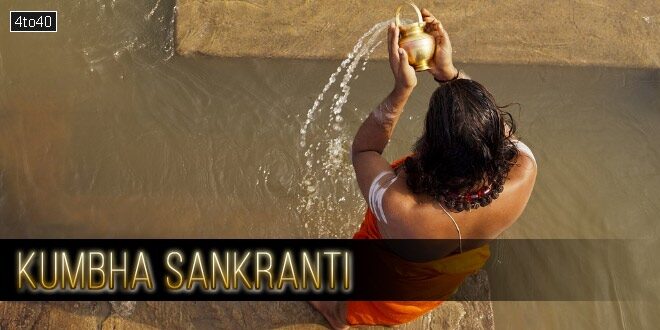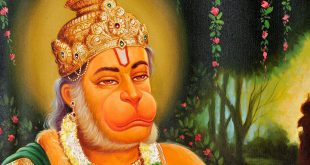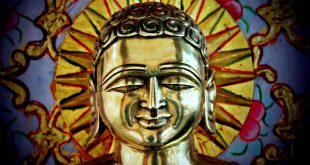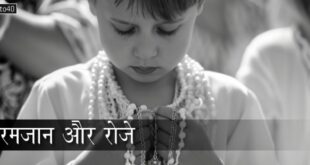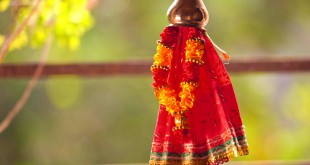During Kumbha Sankranti the Sun is in a transitory phase and is moving from Makar Rashi to Kumbha Rashi. Of the twelve Sankranti that occur during any given year, Kumbha Sankranti is the eleventh in the year. Many communities across Eastern India celebrate Kumbha Sankranti with full religious fervor.
It is also closely associated with Kumbh Mela which is considered to be biggest and the most auspicious religious gathering in the world.
Kumbha Sankranti: Date
- 2024: 13th of February, 2024 (Tuesday)
- 2025: 12th of February, 2025 (Wednesday)
Legends of Kumbha Sankranti:
Kumbh Mela is being held since 629 CE. King Harshavardhana was the ruler during this phase. Bhagavad Puran also makes a mention of Kumbha Sankranti which falls during the period of Kumbh Mela. Devotees take bath in River Ganga on this occasion. Devotees ensure their presence in any of holy cities through which the Ganges passes. Ganges in Haridwar, Yamuna in Allahabad, Shipra in Ujjain and Godavari in Nasik are some of the places where devotees take bath on the occasion of Kumbha Sankranti.
Kumbha Sankranti Celebrations:
The peace and tranquillity that one feels on bathing in the Ganges on this day is unmatched. Devotees get up early and head to the bathing ghats to seek blessings from Goddess Ganga. After taking the holy bath, the devotees head to temples located on the banks of these ghats to pray to the Goddess Ganga for peace and happiness in their life.
Making offerings to cows is considered highly auspicious. Devotees visiting the holy cities of Haridwar and Allahabad are seen making offerings to cows on this occasion. Monks and devotees alike bathe in the holy rivers and seek solace for their present and future lives on Kumbha Sankranti.
The festivities in Eastern India on the occasion of Kumbha Sankranti are special. In the Malayalam Calendar, this festival marks the beginning of Kumbha Masam. The festival is known as Masi Masam in the Malayalam Calendar. It marks the beginning of Falgun Maas in West Bengal. The holy dip taken in rivers on this occasion is known as Sankramana Snana.
Bathing in the Ganga River:
Bathing in the River Ganga is always considered to be auspicious. The significance of this bath increases multifold if it is taken on this day. The devotees who bathe in Ganga on this day are freed from the cycle of rebirths and attain Moksha on their demise from this world. Other holy rivers including Godavari, Shipra and Sangam hold equal significance on this day and devotees bathing in these rivers are blessed with a happy life thereafter. All sins which one might have committed are cleansed.
Kumbha Sankranti is an occasion for the devotees of Goddess Ganga to seek her blessings and lead a purposeful life.
Kumbha Sankranti: Rituals
- Devotees wake up early in the morning and take a bath in Holy rivers.
- Those who are unable holy places to take a bath in Ganga river, they can out Gangajal drop in the bucket and can take bath.
- Offer Arghya to Lord Surya and chant Surya Mantras.
- Engage yourself in religious activities such as chanting mantras, reciting holy books and performing hawan and yajna.
- Donation and charity is considered auspicious on this day so one must get involved in these types of activities.
Mantra:
Om Suryaye Namah..!!
Om Ghrani Suryaye Namah..!!
 Kids Portal For Parents India Kids Network
Kids Portal For Parents India Kids Network
